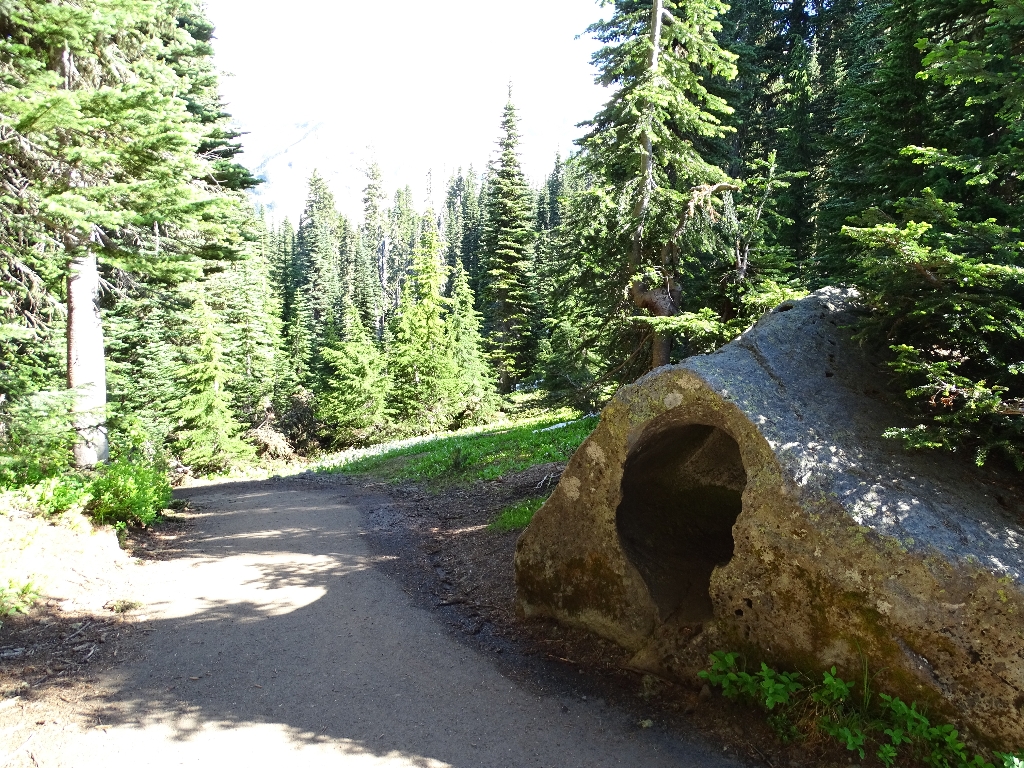
This unusual rock is an excellent example of the forces that drive the formation and evolution of Mount Rainier. Mount Rainier is a volcano that has been active for less than 700,000 years, and this rock was once part of a lava flow that erupted. When extremely hot magma encounters water deep under the Earth’s surface, it can create steam. This steam will dissolve gases into the magma. As these gases expand, they create pressure sometimes high enough to cause an eruption. Opening a carbonated beverage has a similar effect, where gases are dissolved into the liquid and can create an explosive event when opened. Often, the gasses escape as the lava cools like a soda going “flat”. Sometimes, however, the lava cools so quicky that gas gets trapped, leaving holes in the rock of various sizes. If the lava has many tiny bubbles that become encased in the cooled lava, the rock may become pumice. In the case of this rock, a very large gas bubble was unable to escape before the lava hardened. Later the rock broke open, exposing its hollow center.
Is there something we missed for this itinerary?
Itineraries across USA

Acadia

Arches National Park

Badlands

Big Bend

Biscayne

Black Canyon Of The Gunnison

Bryce Canyon

Canyonlands

Capitol Reef

Carlsbad Caverns

Channel Islands

Congaree

Crater Lake

Cuyahoga Valley

Death Valley

Dry Tortugas

Everglades

Gateway Arch

Glacier

Grand Canyon

Grand Teton

Great Basin

Great Smoky Mountains

Guadalupe Mountains

Haleakalā

Hawaiʻi Volcanoes

Hot Springs

Indiana Dunes

Isle Royale

Joshua Tree

Kenai Fjords

Kobuk Valley

Lassen Volcanic

Mammoth Cave

Mesa Verde

Mount Rainier

North Cascades

Olympic

Petrified Forest

Pinnacles

Rocky Mountain

Saguaro

Shenandoah

Theodore Roosevelt

Virgin Islands

Voyageurs

White Sands

Wind Cave

Yellowstone

Yosemite

Zion